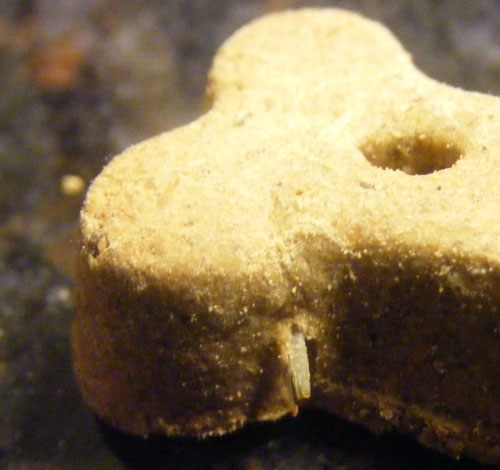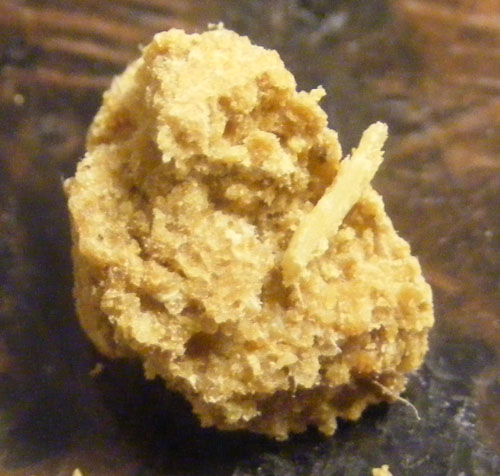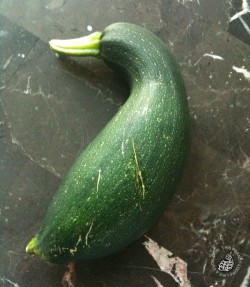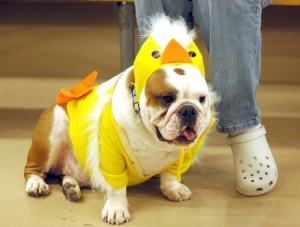I have posted about this issue previously on our Facebook page, however I felt that a more complete explanation of events and findings was required.
On December 24, 2010, we stopped by our local pet store and purchased a bag of food for one of our rescue fosters, a lovely little Chihuahua named Olivia (who is still looking for a home, by the way!). Olivia came to us in terrible condition, having been repeatedly (and recently) bred and ranking a 1 on the body condition scale. When she first arrived she ate a homemade diet we prepared for her. Once she had gained a bit of weight we decided to transition her to a kibble.
We have a very short list of “acceptable foods” that we allow in our home. These foods are generally grain free, and all are of the utmost quality. In compiling this list we take multiple criteria into account, including my own personal experience in pet retail and the experiences of my customers during this period.
According to Traditional Chinese Medicine, rabbit is a recommended meat during the winter months. As Nature’s Variety offers a grain free rabbit kibble in their Instinct line, and Instinct happens to occupy coveted spot #2 on our Acceptable Foods List, we opted for a 4lb bag of Instinct Rabbit Dog.
Immediately upon opening the bag we found several issues. It was obvious that the food contained items that did not belong, and closer inspection revealed multiple sharp objects contained within the kibbles (these were later identified as fish bones and sunflower seed shells) as well as a single kibble that actually contained a large pink piece of what appears to be plastic.

This kibble was pulled from the first bag - it's difficult to tell exactly what the embedded object is, but it is clearly NOT supposed to be there
On December 27, 2010, we returned the bag to the store we purchased it from. The manager of the store proceeded to open several bags of rabbit kibble, and we found similar issues with every bag. We then proceeded to purchase a bag of the chicken variety. Immediately upon opening it we once again found that hundreds of kibbles contained sharp objects. While the individual kibbles were much scarier in the chicken variety (containing very large, sharp bones indeed) the overall adulteration was heavier in the rabbit variety.
At this point I contacted the Nature’s Variety sales rep for Canada and provided him with photos of what we had found. At the same time we purchased another bag of Instinct Rabbit from another store in a neighbouring city and once again documented heavy adulteration of the kibble with sharp objects.

Clearly a sharp piece of bone protruding from a piece of Rabbit Instinct
Several days later I was contacted by a service rep from the US office who requested a portion of the samples I had retained. I was more than happy to comply, and we agreed that due to issues arising from trying to send food over the border it was easiest for me to submit the samples to the store I purchased them from and the Canadian sales rep would handle it from there. We complied the following day.
On January 11, 2011, I finally heard from NV’s Vice President of Quality Systems and Technical Services notifying me that in their opinion there was nothing wrong with the food. We were told the following:
“As has been communicated the pieces you identified are not bone. The meals, as you know, do contain bone. However the meal is ground and screened to a very small particle size and then ground again before going to the extruder, this combination assures that bone pieces are extremely small if visible at all.”
“We investigated the specific lot codes you identified as well as reviewing other codes to assure us that our findings were correct. First of all the pieces you see have always been in the product, this is a result of the fact that it is formulated with whole sunflower seeds rather than a powdered sunflower. During processing these seeds will be broken and cracked into smaller pieces but are not taken down to an extremely fine powdery consistency. Next we looked at the frequency of these particles, comparing our retains and warehouse samples to the videos and found that the rate of occurrence looked about equivalent. We then took multiple pieces and examined them carefully where we determined that they are in fact the seed and not the bone.”

This could be a bone shard OR a seed shell - either way, it easily cut through several layers of GLAD plastic without breaking or coming loose from the kibble itself
Now, it doesn’t take a microscope to tell that what we are looking at is not simply sunflower seed. Notice that NV admits that the “frequency of the particles…looked about equivalent” when comparing the videos I made of the adulteration to their own samples. Let’s digest that slowly – NV considers this to be NORMAL.
My response to this email was understandably one of frustration. They had failed to inspect the kibbles I had sent in for sampling, they had failed to give any explanation for the large pink object we found, and they had failed to address the fact that these objects were capable of cutting skin and definitely were unsafe for consumption – particularly by a small animal such as the Chihuahua the product was purchased for.
I also found their assertion that because they believed these objects to be seed casings rather than bone that therefore the product was safe. My response was that I did not care if the offending objects turned out to be bits of dry yogurt – it did nothing to diminish the safety risk.

This is our photograph of Chicken Sample 1-17
At this point we had identified sharp objects capable of cutting skin in two lots of Instinct Rabbit Dog and one lot of Instinct Chicken Dog. My reply email did not get a response until February 2011. More on that later.
In the meantime we set about trying to identify the objects more clearly in the hopes that we could convince NV to take this matter more seriously. A friend of mine happens to attend the local university and is enrolled in their Anthropology program. As such, she has access not only to some pretty impressive laboratory equipment, but also some pretty impressive experts. We gave several kibble samples to the lab and waited to see what they came up with.
It took some time for the kibble to be looked at, but on January 28th I received an email informing me that they had taken apart the worst kibble of the bunch, Chicken Sample 1-17. After dissecting this particular kibble they took photographs of what they found. The expert looking at these samples was a zooarcheologist who had done her thesis work on fish bones. Not only was she able to identify the seed shells, but also a large amount of fish bone particles in the samples we sent including a partially complete Dorsal Ray bone and a piece of clear plastic from CS1-17. Photos of that kibble and the bone found within are provided here.

This is the magnified photo of the Dorsal Ray bone removed from CS1-17
Armed with this new evidence we immediately set to notifying everyone we had been speaking with about this issue, including Nature’s Variety. We received an email back on February 2, 2011 – this was the first contact they had with us following our receipt of the initial email.
They assured us that they had taken our complaint seriously, yet again refused to address our most basic concerns. It was at this point we were notified by the store that the rep had failed to take the samples we had provided – therefore we knew that they had not even bothered to inspect the offending kibbles. We received this explanation:
“My previous e-mail was reporting to you on what we found looking at our samples. However as you pointed out these are not your samples, only our attempt to find duplicates to your photos. We even had our Canadian sales representative bring samples from the same code date bags that he pulled from the store where you purchased your kibble, but we couldn’t find any kibble or stray matter in the sample that matched your photos. As you undoubtedly understand it is very difficult to investigate without having access to the material or having investigative results or conversations with the parties.”

This is a magnified image of the plastic the lab found in the Instinct Chicken Dog
Of course, our response was that conversations with the vets and our zooarcheologist had nothing to do with the issue at hand – after all, Nature’s Variety had full “access to the material” and chose not to look at the samples provided. We had provided dozens of photos, several videos, and now photos taken under microscope of our findings clearly illustrating objects that a) should not be in the product and b) posed a danger to the animal eating it.
On January 31 we were informed by a staff member at the store in question that a customer had returned a bag of Instinct Cat Rabbit that the cat would not eat. Out of curiosity the staff member and manager inspected the kibbles and reported to me that sharp objects were found throughout. Unfortunately I have not been able to document the rabbit cat kibble – however I have no reason to doubt the report of the store manager who at this point is now seriously concerned with the product safety.
On February 4 we provided NV with the phone number of the store we had originally purchased from and the name of the store’s manager who had gone through the product with us and was aware of the problem and its severity. To date NV has continued to demand the contact information for our experts but has failed to contact this concerned retailer.

Another example of Chicken Instinct, CS1-11. Are you concerned with what this object is, or would you simply rather that it not be there at all?
February 8, 2011 my husband was going through some baskets of pet supplies we had stored away and came across a sample of Instinct Cat Duck and Turkey that the sales rep had given to us at an annual trade show in September 2010. I am positive of this date – the food had just been released and the rep knew that I had been waiting to see how much chicken would be included in the product (for some reason NV puts chicken meal in all of their cat flavours – something they do not do with the dog formulas. This renders the cat varieties as useless for allergy or elimination diets, a frustrating issue for retailers who are always looking for grain free products using alternative protein sources for hard to feed cats).
On a whim (half joking) my husband brought me the sample and suggested I inspect it for sharp objects. I was about to have him throw it away and decided it couldn’t hurt to take a peek. Considering that NV was still maintaining that they were finding it impossible to locate samples of their product that contained objects matching those I had documented, I quite honestly did not expect to find anything.
Sadly, immediately upon opening the sample bag the foreign objects were obvious. We poured out the sample and went through it – not only did it clearly contain sharp objects (including bone), but the saturation was the highest we have come across. Even worse, while inspecting the sample we came across a kibble that contains a very small piece of green material. Upon inspection with a 45X hand held microscope, this piece appears to be a very thin but clearly rectangular piece of plastic.

Kibble from the Instinct Cat Duck & Turkey sample - note the uppermost kibble containing the tiny piece of green plastic. Do any of these kibbles look like food you would want to feed your cat? Do these kibbles look safe to you?
Of course we notified NV immediately, although their response was what we have now come to expect – namely further insistence that they speak with our experts. They also requested that we submit the sample for testing. Given that all previous samples submitted have ended up disappearing, I am seriously reluctant to hand this sample over. Remember, the previous sample containing the large pink object was utterly ignored by NV.
The cat kibble shape is a flat circle just a few millimeters thick. Unfortunately this means that many of the kibbles contained bone pieces that protruded through both sides of the kibble and were firmly anchored. For cats who chew very little or swallow pieces whole (which would be most of them, in my experience) this product is especially dangerous. This form of adulteration matches what was described to me by the staff at our local store when they inspected the bag of Rabbit Cat – although the rabbit kibbles are apparently tiny and globular, bones extending out either side of the kibbles were found throughout.
While Nature’s Variety continues to claim that they have been unable to find a sample of kibble that matches our findings, the reality is that we have been unable to open a bag of Nature’s Variety Instinct kibble of any variety that does NOT contain these objects. We also firmly reject their claim that all of these objects are seed casings, and in any matter we stick by our original assertion – that is, we don’t care if these objects turn out to be dried yogurt – the objects are hard, sharp, and firmly embedded enough to cut through several layers of GLAD heavy duty plastic bag and have succeeded in cutting skin when tested. These are NOT objects you would want sliding down your pet’s throat, particularly firmly embedded in the kibble at a 90 degree angle.
We have advised all of our clients to stop feeding ALL Nature’s Variety products. While our own experience has been limited to the Instinct line of cat and dog food, an online search has discovered potential issues with their canned, freeze dried and frozen raw diets as well.
You can view photos of the affected kibbles from the first bag of Instinct Rabbit Dog here and here, the second bag of Rabbit Dog here, the Instinct Chicken Dog here and the Instinct Duck and Turkey Cat here. Photos taken under the microscope can be viewed here, and photos of the pink object found in the first bag of Instinct Rabbit Dog here.
Please feel free to comment on this issue – comments will not be moderated. I am interested to see if other pet owners consider these photos to show an acceptable product or one that poses a safety issue and should be avoided. If you feed Nature’s Variety I urge you to take a VERY close look at your kibble before feeding it. Should you discover anything that gives you pause, feel free to link to it in the comments or email me at dogsintraining.hamilton@gmail.com with a description and photos and I will add it to this post.
We strongly urge Nature’s Variety to take a closer look at their raw materials as well as their current screening process – until these products are removed from the shelves and replaced with a product we are assured is safe, namely one that does NOT contain sharp objects of any kind, regardless of what they are made of.
*** Update, February 11, 2011 – we received an email from NV again today which contained several interesting statements. First, that other complaints had been received about the same issue (something they had previously denied). Second, that the company could not find an “underlying issue that is as critical as you imply.” To me, this suggests once again that they are aware of the issue and simply do not find it “critical” enough to act upon. With this information in hand, we are adding Nature’s Variety products to our permanent “Products To Avoid” list. This is incredibly unfortunate, as we believe that NV puts out a unique product that fills a necessary void in the current marketplace. However, given our findings we can not agree that this issue is of a “non-critical” nature. ***
















